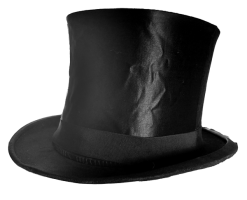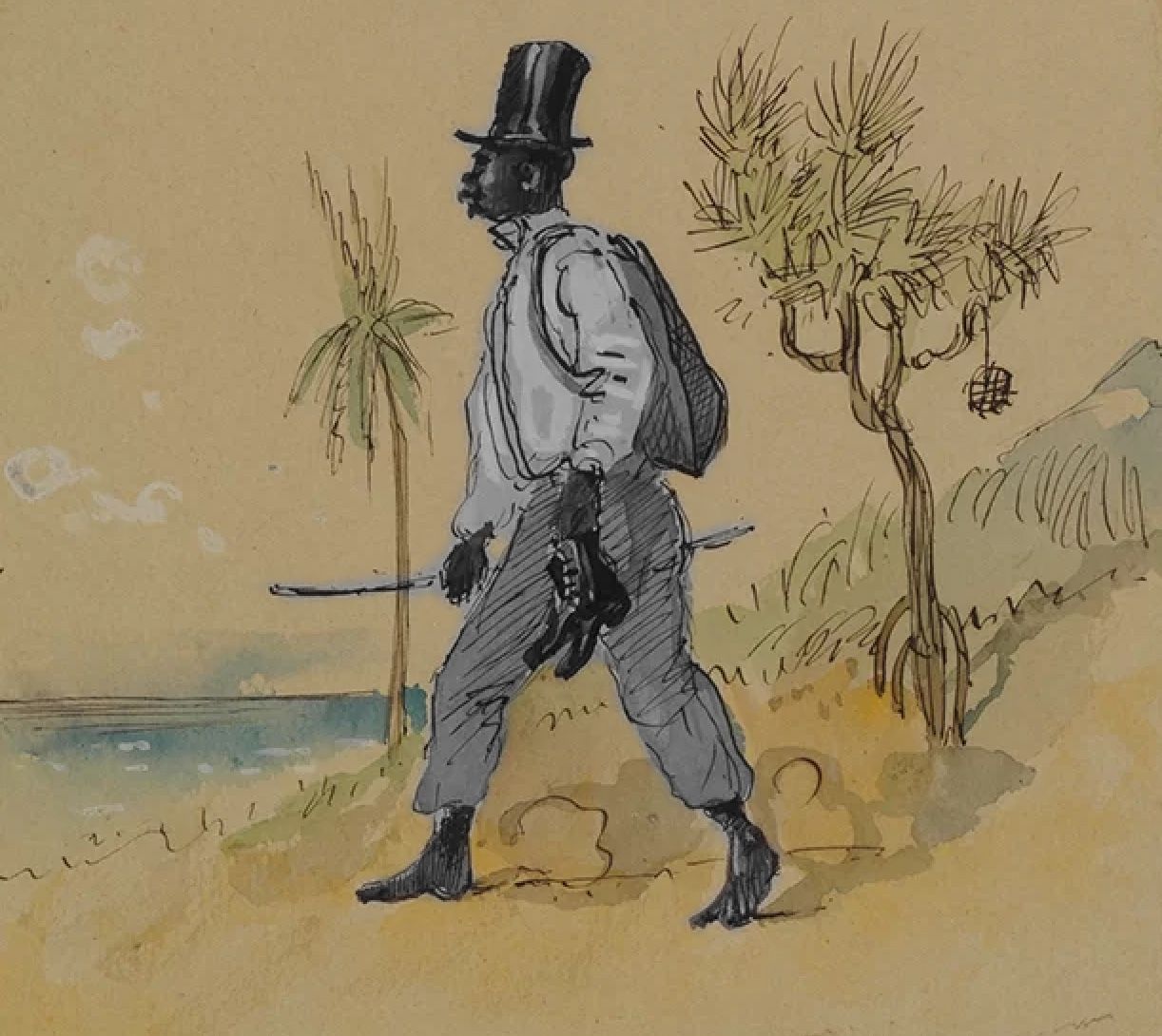Analyzing : watercolour "a citizen" from 1848/65
Context: 1848 is the date of the abolition of slavery in the French colonies. On Reunion Island, the abolition decree, voted in April in Paris, only came into force on 20 December 1848. The commissioner sent by the government of the Second Republic, Sarda Garriga, obtained from the slave workers that they wait until the end of the sugar cane harvest period!
In this watercolour by Hippolyte Charles Napoléon Mortier, the Duke of Trevise (Marquis de Trévise at the time), the new "citizen" is proud to display the attributes of his young civic freedom: hat, shoes...
A cartoonish spirit
The author of the watercolour, himself a landowner, associated with the Kerveguen family, who ran several sugar factories on the island of Reunion, takes an amused (ironic?) look at the former slave who had become a new citizen of the second republic. Thus, he accurately draws his blue canvas trousers, the one used to clothe the working population, and his backpack made of woven vacoa, his "bertel" (shoulder strap) in Creole.
The idea here seems to be to highlight the paradox.
Datation

"Le citoyen" obviously refers to abolition, a former slave, freed, became a full citizen of the Republic. The watercolour is marked "Bourbon Island", the former name under the royalty, renamed by the revolutionaries to "Reunion Island", and the date 1865. At the time and sometimes still today, the two names coexist, even if the new official name is "Reunion".
The date of the watercolour is not necessarily the date of the initial sketch. It is not uncommon for watercolourists to reproduce the same drawing from their notebooks and to add to it later.

Source : IHOI

The Citizen
In the days of slavery, it was forbidden for workers to wear shoes. It was necessary for colonial society to mark social distinctions through clothing and accessories. This young man is probably used to walking barefoot, and saves his beautiful boots for an important event.
If Creoles like hats, here the headgear is even a little pompous for this determined young man: he may have received it from his former "master", as may the patent leather boots.
The elevation of the hat, accentuated by the artist, and the effect of the reflection on the silk, suggest a hat that is more breathable than felt hats.
As we saw earlier, employers were obliged to provide their workers with a regular yardage of blue cloth for their clothing. Here, the paradox between the young citizen's elegance and his identifiable working-class heritage is strong.
A traditional backpack of the working classes, it is woven from vacoa leaves, of which the artist has depicted a plant as part of the décor. This suggests that the scene takes place by the sea, possibly near the present-day communes of Rivière Saint-Louis, Saint-Pierre or Saint-Joseph, where Kerveguen had large farms and factories.
The nature and function of the object held in the hand are not clearly identifiable. However, one could possibly think of a whip to lead, indicating that the man is working with animals.

the stage

At the sight of the scenery, the Reunionese will immediately recognise the typical landscapes of the south and west coasts of the island. In the distance, the Indian Ocean and the foothills of a piton or the cirques. The high grass could be wild, or illustrate the top of a sugarcane plot cultivated in a depression in the background. The tall palm trees mark the coast as well as potentially the entrance to a property. The Vacoa is clearly recognisable with its typical aerial roots and hanging fruit.
The citizen is probably walking on a dirt path, the artist having taken care to depict the dust raised by his step in a very illustrative and comic style.
A simple pastoral setting, still visible today








Photo credits and aerial views : ©Julien Vandanjon - tbk / Full sources available under Creative Commons cc-by-nc-sa license from Afac974-Capeline for cultural and educational projects.






